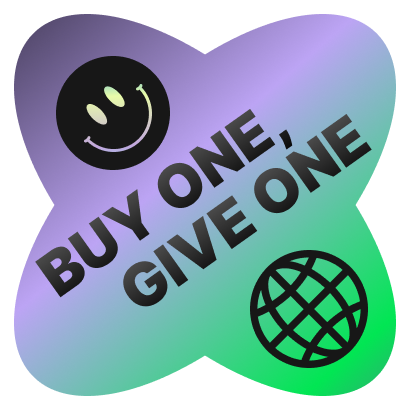Creativity Homogenised
With very few exceptions, we all doom scroll the same tiktok feeds, binge-watch the same series, and have overly strong opinions on barbenheiemer. It's not surprising then that when given a brief, groups of creatives can arrive at strikingly similar solutions. We're drawing from the same cultural well, and unsurprisingly, we end up with the same pool of unique ideas that can unfortunately look more like a puddle.
Diversity of Input = Divergent Thoughts
We're in the business of storytelling, of shaping not just brands but also the cultural landscape. If we all trot down the same well-worn paths, we're setting ourselves up for an industry that's stale and predictable. We risk missing out on truly divergent thinking. So what can we do to combat this?
Step 1: Get off the highway
Our first task is to diversify where we're getting our inspiration from. Consciously curate your cultural influences like your life depends on it. Here are some thought starters:
- Get weird with your books, films and tv. Stay in touch with the zeitgeist for sure, but also push your downtime entertainment into less trodden fare.
- Go to museums and art shows more. There’s nothing more humbling than seeing creative work that lasts the ages.
- Get out of the office and work in different environments. Easy to say but hard to do.
- Learn about quantum physics, learn a language, remaster the yoho diablo. Activate different parts of your thirsty brain.
- Eat an orange, try a zucchini, cook eggs florentine. Why not?
In short? Throw yourself into anything to get out of the ruts and jog the creative muscles into unfamiliar territory.
Step 2: Make diverse teams
The more varied our teams are, the less likely we are to fall into a creative rut. Create teams from different backgrounds, cultures, and even industries. A marine scientist with a creative itch or a folk musician with a way with words might just have the out-of-the-box thinking your next campaign needs. History is replete with examples of people from other fields dipping their toes into advertising including Andy Warhol, Salmon Rushdie, Mary Wells Lawrence, Peter Carey and Ridley Scott to name a few.
Step 3: Normalise a culture of curiosity and embrace the weird
Set up an agency environment that doesn't just tolerate but actively encourages questioning, exploration and above all, a little bit of weirdness to keep things out of the safe zone. The weirder the idea, the better—because sometimes, the most off-the-wall concepts make the most memorable campaigns. Let’s make advertising weird again.
It’s not even really optional: if we want our ideas to stand out in the creative industry, we need to curate and carefully guard our creative inputs. The catch is that we don’t really know how those creative inputs will culminate in unique ideas, so when in doubt - the more different, the better.
All we can do as creatives is to ensure we have good quality raw ingredients in order to give ourselves the best chances of avoiding a creative’s worst nightmare: mediocre homogeneity. So start taking the diversity and weirdness of your cultural inspiration just a little more seriously.
We acknowledge the Traditional Custodians of the land upon which we create, the Gadigal People of the Eora Nation. We pay our respect to their Elders past and present, and extend that respect to all Aboriginal and Torres Strait Islander peoples today.
Always was, always will be, Aboriginal land.



